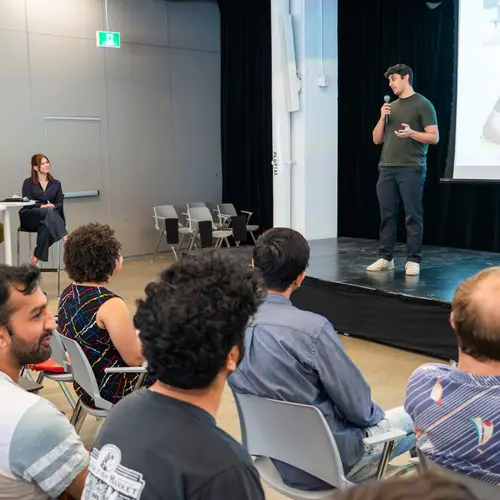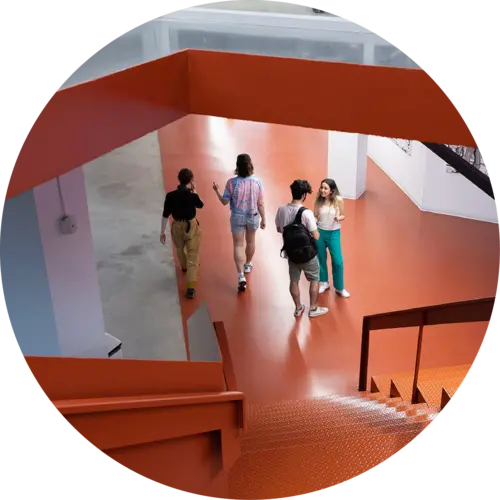
Hugo Larochelle
Biographie
Hugo Larochelle est un chercheur pionnier en apprentissage profond, leader industriel et philanthrope.
Il a commencé son parcours académique auprès de deux des « Pères fondateurs » de l'intelligence artificielle : Yoshua Bengio, son directeur de thèse à l'Université de Montréal, et Geoffrey Hinton, son superviseur postdoctoral à l'Université de Toronto.
Au fil des ans, ses recherches ont mené à plusieurs découvertes majeures présentes dans les systèmes d'IA modernes. Ses travaux sur les auto-encodeurs débruiteurs (denoising autoencoders) ont identifié la reconstruction de données brutes à partir de versions corrompues comme un paradigme clé pour l'apprentissage de représentations abstraites utiles à partir de grandes quantités de données non étiquetées. Avec des modèles tels que l'estimateur de distribution autorégressif neuronal (neural autoregressive distribution estimator) et l'auto-encodeur masqué pour l'estimation de distribution (masked autoencoder distribution estimator), il a contribué à populariser la modélisation autorégressive avec des réseaux de neurones, un paradigme aujourd'hui omniprésent dans l'IA générative. Ses travaux sur l'apprentissage de nouvelles tâches sans données (Zero-Data Learning of New Tasks) ont introduit pour la première fois le concept aujourd'hui courant d'apprentissage zero-shot.
Il a ensuite transposé son expertise académique à l'industrie en cofondant la startup Whetlab, qui a été rachetée par Twitter en 2015. Après avoir travaillé chez Twitter Cortex, il a été recruté pour diriger le laboratoire de recherche en IA de Google à Montréal (Google Brain), maintenant intégré à Google DeepMind. Il est maintenant professeur associé à l'Université de Montréal et à l'Université McGill. Il a également développé une série de cours en ligne gratuits sur l’apprentissage automatique.
Père de quatre enfants, Hugo Larochelle et sa conjointe, Angèle St-Pierre, ont également fait de multiples dons à l'Université de Montréal, à l'Université de Sherbrooke (où il a été professeur) et l’Université Laval pour soutenir les étudiantes et étudiants et faire avancer la recherche, particulièrement dans le domaine de l'IA pour l’environnement. Il a également initié la conférence TechAide, qui mobilise la communauté technologique de Montréal pour amasser des fonds pour Centraide, soutenant ainsi la mission de l'organisme de bienfaisance de lutter contre la pauvreté et l'exclusion sociale.


